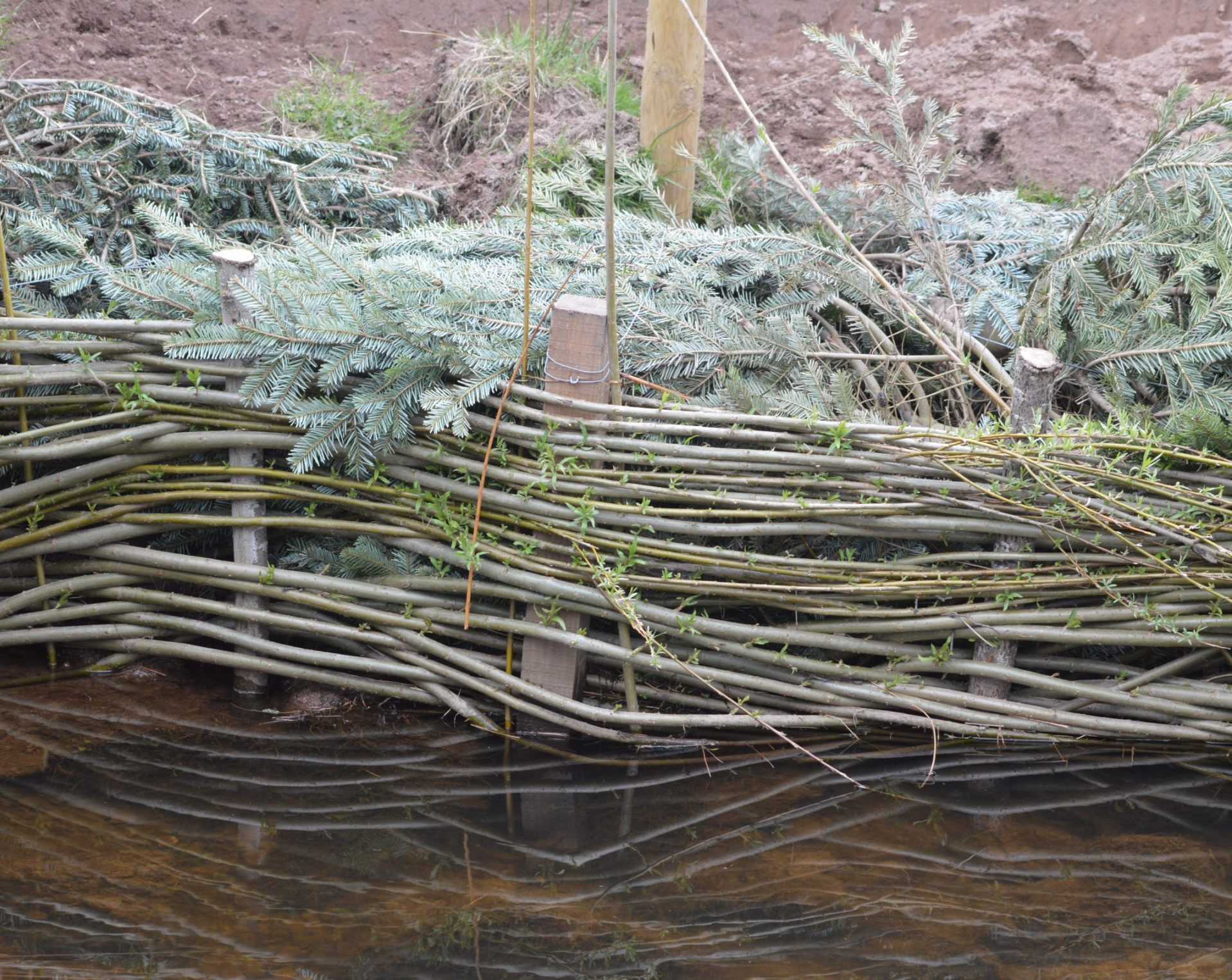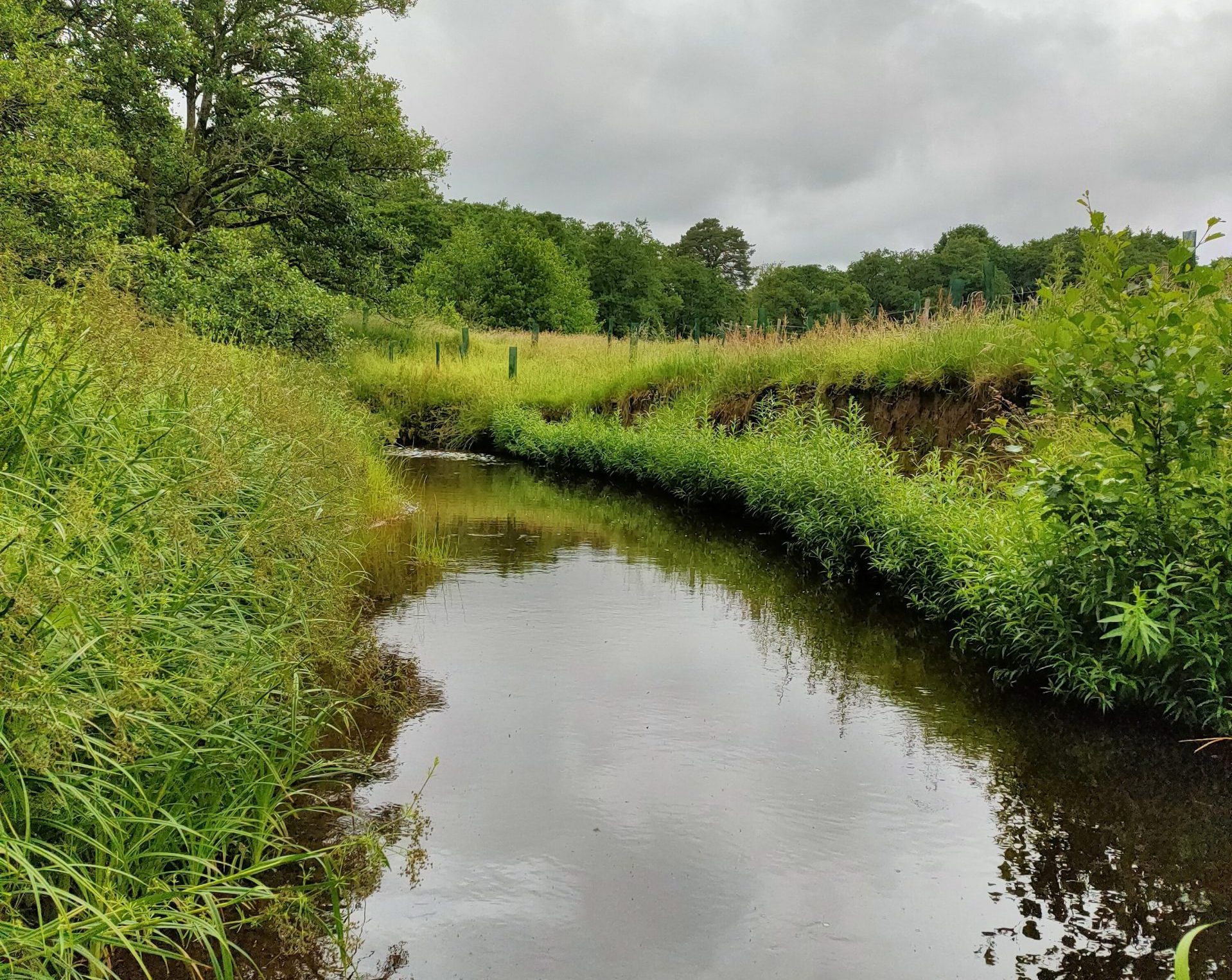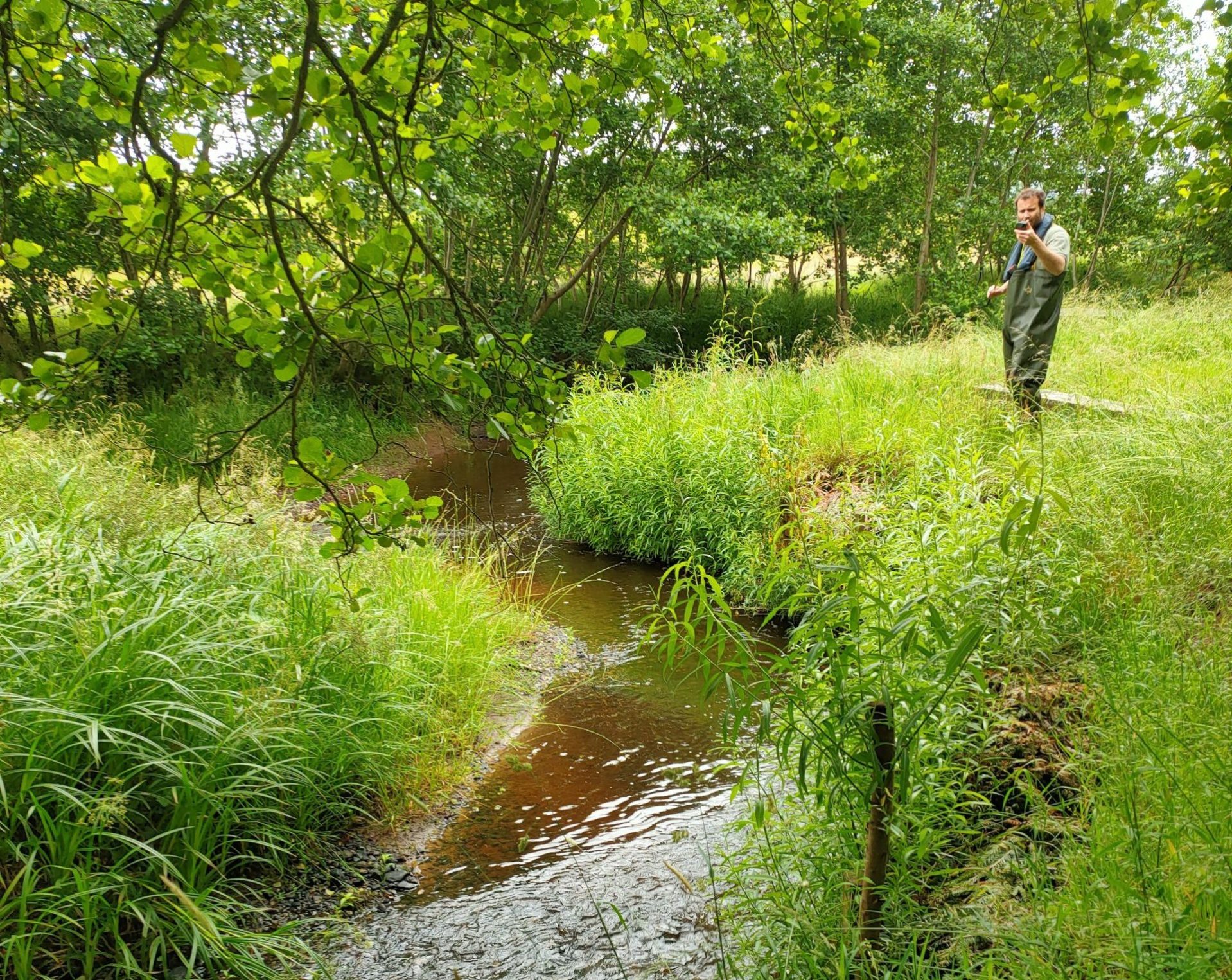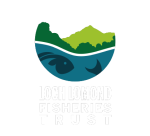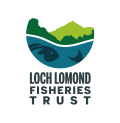wild salmonid fund
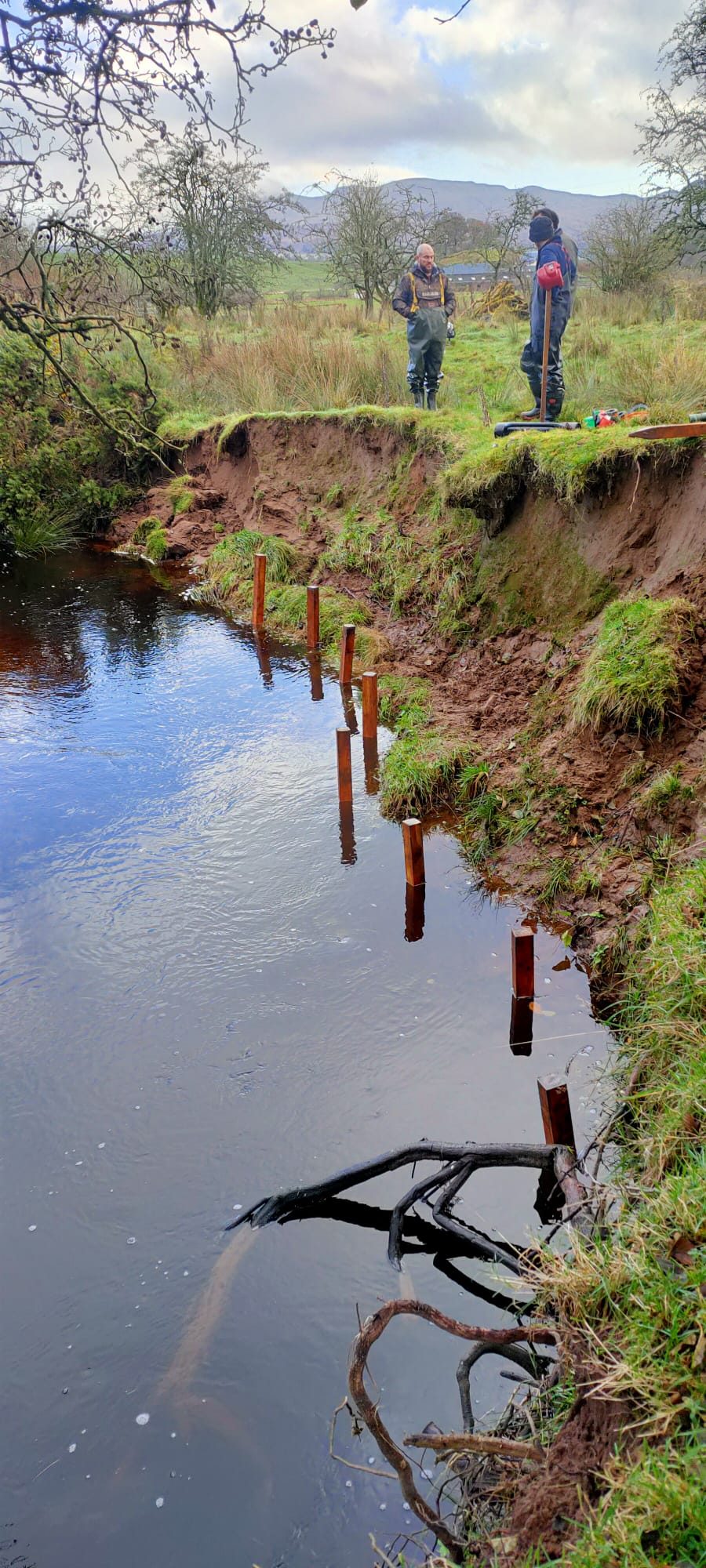
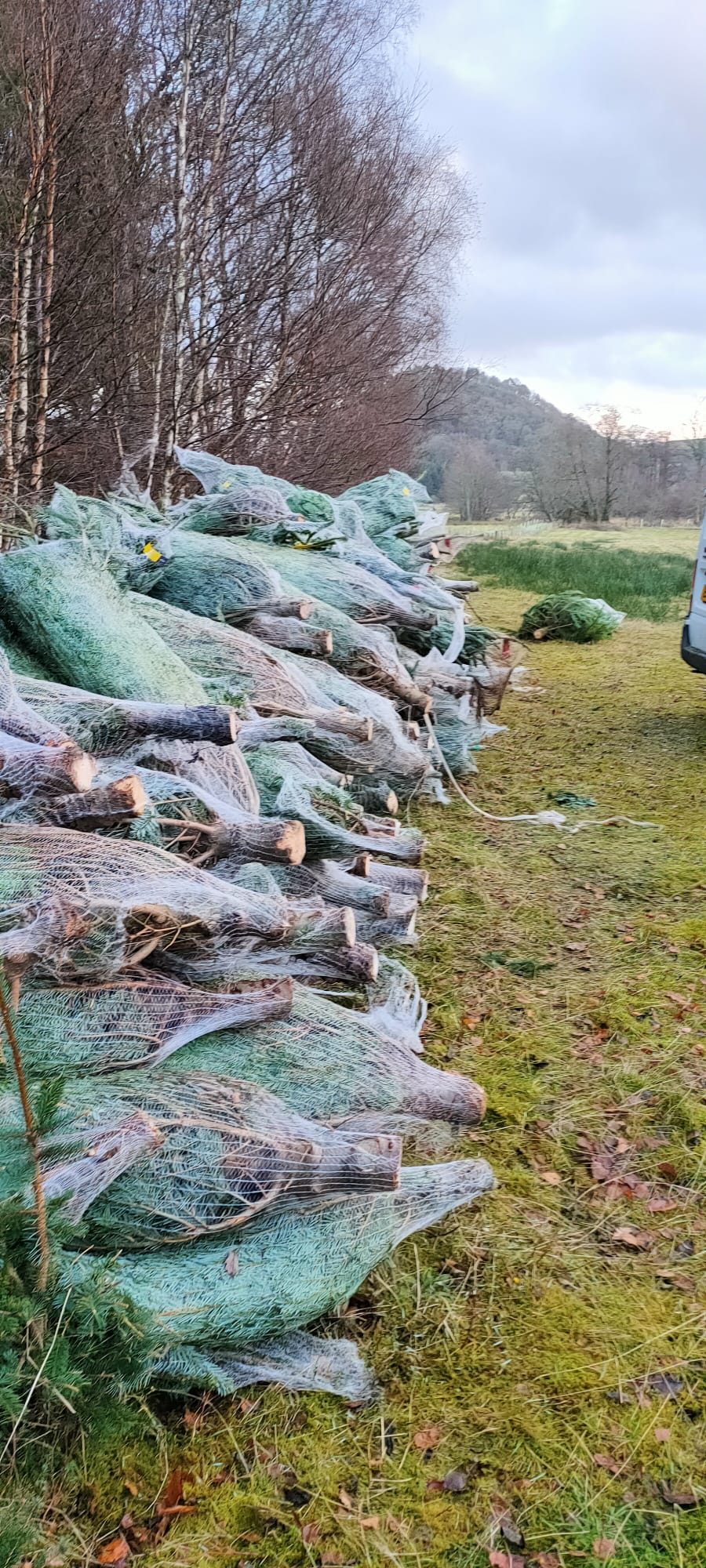
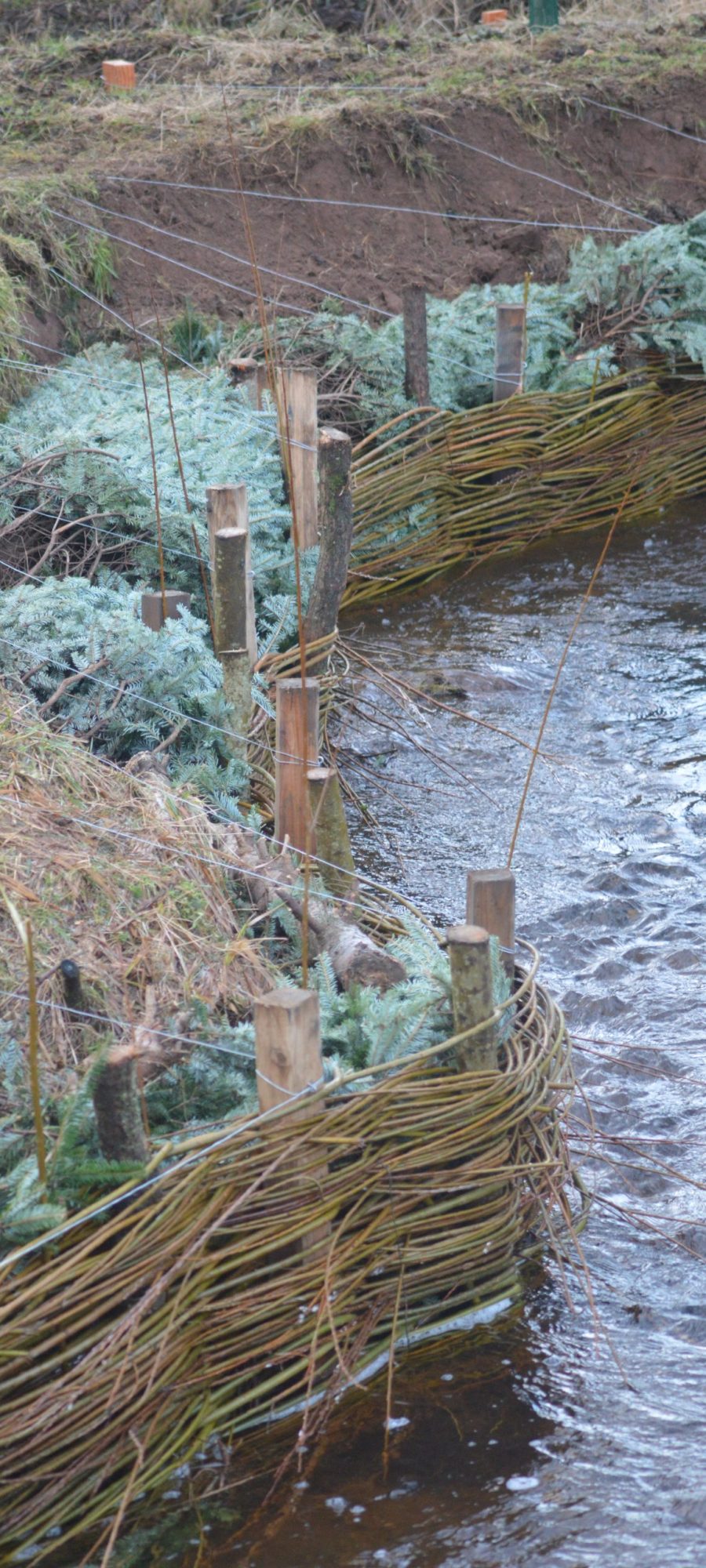
At the end of 2022, the trust received grant funding from the Wild Salmonid Support Fund to carry out bankside restoration work at sites on the Endrick Water, Blane Water, Alltquhur burn and the Murroch burn. These sites were chosen due to the rate at which sections of bank were being eroded, causing sediment to be deposited throughout the watercourse, clogging gravel used for spawning salmon, trout, and lamprey.
We chose to use a natural and traditional solution to this problem in the form of willow spiling. This is the process where live willow rods, up to 3 metres in length, are interwoven around willow posts sunk into the riverbed – creating a wall of willow immediately in front of the eroding bank. These living walls were then backfilled with old Christmas trees packed tightly between the willow and the bankside, stopping the loss of sediment into the river. The open nature of the Christmas trees has the added benefit of also capturing sediment washed down from further upstream, acting like a filter. Unlike hard engineering, with time these walls grow stronger as the willow grows and becomes established, returning erosion rates to a natural level.
As the willow grows, it has the additional benefit of providing some much-needed in stream cover for fish. Some sites we choose had very little tree cover or overhanging vegetation, resulting in no shaded areas to escape to in the warmer months, or cover to uses as refuge from predators. By employing this method of protection, it provides immediate cover for fish and the fast-growing nature of willow means that this summer, there is already healthy growth in the rivers. During our electrofishing season, we’ve found some salmon and trout parr utilising this new pocket of habitat. This is something we will continue to monitor over the coming years – with the hope that these sites will support healthy fish and invertebrate populations.
